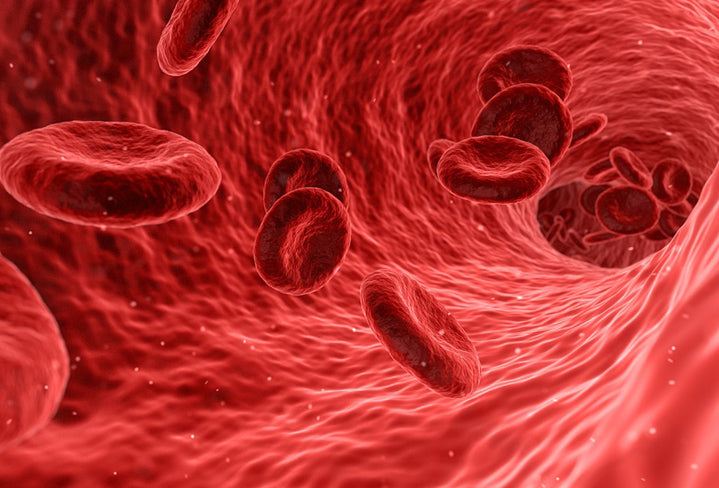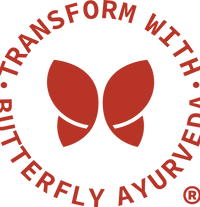
The formation of Rakta Dhatu is dependent upon the quality and health of the Rasa dhatu ( plasma). Rakta dhatu consists of the oxygen carrying red blood cells in the body. It is the foundation of life since it carries Prana to every dhatu, organ and cell in the body. It brings lustre to the skin, lips, internal organs and supports healthy growth of muscles and flesh.
Rakta dhatu is developed by the action of Raktadhatwagni on Rasa dhatu in the Yakrit ( liver ) and Pleeha ( spleen), where the ‘ Tej’ of Ahara Rasa and the Ranjaka Pitta ( fire present in the liver) along with Ushma ( heat ) act on Rasa to cause the redness in the rakta.
The Rasa that comes to the heart with the help of Samana Vata is also transformed by Pitta to Rakta, and then pumped into the whole body.
A healthy rakta is said to have the following qualities, according Ashtanga Vagbhata :
Shuddha (pure) Rakta is Madhura (sweet) , Lavana (salty), Sama Shitoshna (in which heat and coolness takes place in the same intensity), Asamatha (Drava), like shade of Padma, Indragopa, Hema (Gold) and Rakta of Avi (Sheep) and Shasha (Hare).
It is also said to be sweet, unctuous and to carry a smell.
Rakta dhatu’s prime function is to provide sustenance to the body. It is the base of a living body.People with high quality Rakta Dhatu are adorned with beautiful, glistening and gleaming features such as ear, nose, eyes, tongue, lips, palms, soles, nails, brows and genitals. They have healthy internal organs. They are brilliant and intelligent, and have a charm on their faces. They cannot tolerate very hot weather. They tend to be appealing and attractive.
The upadhatus ( sub-tissues) of this dhatu are the ligaments and veins in the body. And the mala ( waste product) of this dhatu is Pitta ( bile) that is developed in the liver, and stored in the gallbladder.
To maintain a healthy Rakta it is important to maintain good health of the Rasa dhatu, the liver and the spleen.
In case the development of Rakta dhatu is afflicted with vitiated doshas, then it could lead to a hyper state or augmentation of Rakta dhatu leading to redness in the eye, redness of skin, inflammation, or engorgement of veins. Rakta dhatu directly associates with Pitta. An aggravated pitta causes Rakta Vriddhi ( hyper condition). In such cases, the liver tends to heat up due to excess production of the rakta, and the by-product bile, that builds pressure on the gallbladder, and often exhibits aggression, anger or intolerance of heat in a person.
In case of a hypo-state or disappearance of Rakta dhatu, the symptoms show as paleness of skin, drab, dry and broken skin, coldness in the body, or reduced urination and sweat. A person may exhibit qualities of dullness, and difficulty in comprehending new information. This happens due to vitiated doshas that have led to poor quality development of rasa dhatu or rakta dhatwaagni. This is mostly attributed to poor eating habits and an unhealthy lifestyle.
Rakta consists of the five great elements ( Panchamahabhuta) that also correspond with the understanding of modern physiology.
- Prithvi ( Earth) makes for serum protein, haemoglobin, and glucose.
- Jala ( Water) makes for plasma & lipids
- Agni ( Fire ) makes for potassium, magnesium, iodine, chloride, acid phosphate, lipase, insulin
- Vayu ( Air ) includes oxygen, carbon dioxide, Vitamin C and thyroxine.
A healthy rakta dhatu provides a good foundation for the development of all the other dhatus. Therefore, we must ensure that we take care of our eating habits and lifestyle along with maintaining a good balance of our tridoshic constitution in the body to allow healthy dhatu development to take place.
*courtesy : Sushruta, Ashtanga Vagabhat, Charak Samhita

Comments (0)
Back to Get Healthy with Akshi